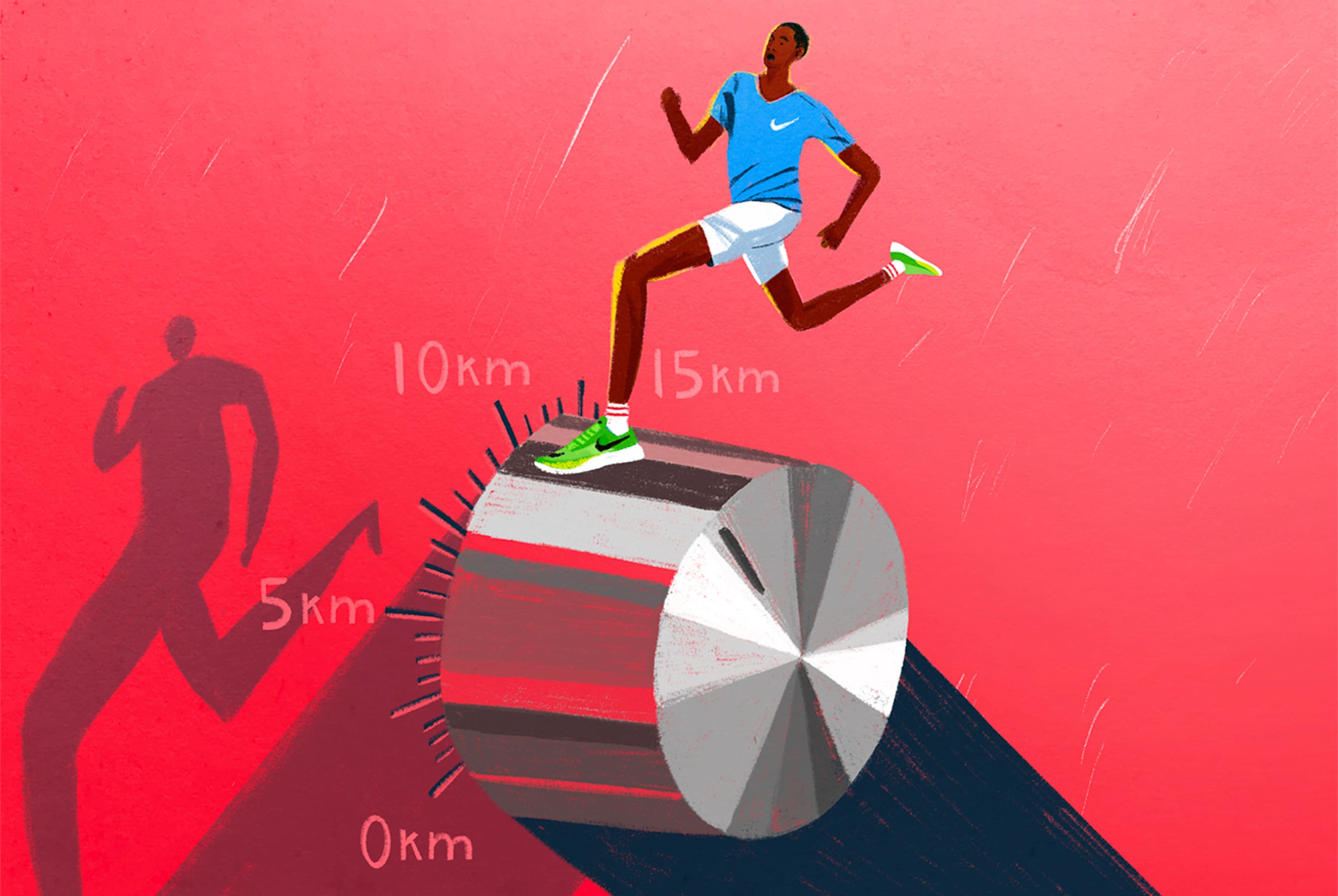Run Further—Without Getting Hurt
Coaching
Ready to take your running relationship to the next level? This guideline can keep you lacing up with confidence.
- New runners often push themselves too hard, too soon, resulting in sidelining injuries.
- A simple DIY assessment can help you increase mileage gradually to keep your body feeling good.
- Stay within your ideal range (we'll teach you how!) by tracking your runs in NRC.
Here's what you need to know ...

Few things feel more euphoric than realising you actually like running. Suddenly you're pumped to keep your routine going—and advance it too. Not so fast! (Literally.) To make real headway as a runner, think patience over pushing.
"One of the biggest mistakes runners make is increasing their mileage or frequency too quickly, to the point that they get injured from overuse and weakness", says Steven Mayer, MD, a sport medicine physician at the Northwestern Medicine Regional Medical Group in Illinois.
Running is a high-impact activity. Your muscles, joints, bones and connective tissue can take a beating from hitting the pavement as you carry your entire body weight on one leg at a time, over and over. If you start running every day or suddenly double your distance before your tissue has adapted and strengthened to handle the impact, it can begin to break down, says Tim Gabbett, PhD, a physiologist and applied-sport scientist at Gabbett Performance Solutions in Brisbane, Australia.
You might not even notice when that breakdown starts. That's because your cardio fitness (heart and lung capacity) advances faster than your muscles can keep up, says Mayer. You might think you're conditioned enough to turn a few 3-mile runs into 5-milers … then suffer through shin splints or an achy hamstring. The result? Progress, cancelled.

Forget the Old Runner's Tale
That's not to say you shouldn't try to go further or faster or run more frequently. After all, nothing sounds more boring than running the same 5K loop three days a week until the end of time. The key to progressing with confidence, says Gabbett, is to push yourself little by little, exposing yourself to more stress, or load, safely.
Turns out the 10-percent rule—the widespread idea that you shouldn't advance your distance (or pace) by more than 10 percent each week—has no scientific basis. "It's not necessarily proven to prevent injuries", says Mayer. In fact, runners who increased their training load by up to 50 percent per week experienced almost the exact same injury rates as runners who followed the 10-percent rule did, according to one study from the University of Groningen in the Netherlands. Even more heartening: novice runners who averaged 20 to 25 percent weekly increases avoided injuries, per a study at Aarhus University in Denmark.
A Personalised Way to Advance
To figure out how to move forwards, Gabbett recommends using a more individualised guideline he employs for his athletes: the acute-to-chronic workload ratio. It may not roll off the tongue, but in practice, it's actually quite simple. "It takes into account how much you ran this week [the acute] versus how much you ran over the past four weeks [the chronic]", he explains. (If you haven't yet logged four weeks, stick with what feels like a relatively easy amount of mileage for your first month of running to get a foundation under your belt, then use this ratio to keep adding on.)
"It's a feedback cycle", continues Gabbett. Every time you add to your load via weekly distance, check in on how you're feeling immediately afterwards ("I crushed those hills") and within 48 hours ("My legs are so sore"). Based on both, you should have enough info to decide whether to dial it up or spend extra time on recovery, he says.
For example, if you've been running 10 miles a week for the past few weeks and did 15 miles this week, that load is 1.5 times greater. If it felt hard or bad, you may want to spend another week at 15 miles or even scale back to 10. But if it felt good, you can try increasing your mileage by that same rate next week. Even if it felt incredible, it might be best to not top the 1.5 increase: research shows that an acute-to-chronic workload ratio within 0.8 to 1.3 was associated with a low injury risk, but that injury risk increased significantly when the ratio was above 1.5.
One other crucial tool to help keep you confidently running more and more: strength training. Focusing your resistance routine on glute and core work specifically, research suggests, could help stave off some common overuse injuries, as those exercises build up your bones, tendons and muscles to better handle all that stress, says Mayer. Try running every other day and working on strength and recovery in between.
Patience (or maths) might not be your best skill set, but once you see improvement without pain or problems, you'll likely find a new appreciation for it—and for your stronger-every-day body.
Words: Ashley Mateo
Illustration: Ryan Johnson
CHECK IT OUT
Ready to increase your mileage? Support your legs with a fresh pair of shoes designed to go the distance, then head out for an Audio-Guided Run in the Nike Run Club App to stay motivated as you move.